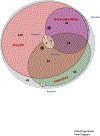Association of Early Dexmedetomidine Utilization With Clinical and Functional Outcomes Following Moderate-Severe Traumatic Brain Injury: A Transforming Clinical Research and Knowledge in Traumatic Brain Injury Study
- PMID: 37966330
- PMCID: PMC10939970
- DOI: 10.1097/CCM.0000000000006106
Association of Early Dexmedetomidine Utilization With Clinical and Functional Outcomes Following Moderate-Severe Traumatic Brain Injury: A Transforming Clinical Research and Knowledge in Traumatic Brain Injury Study
Abstract
Objective: To examine early sedation patterns, as well as the association of dexmedetomidine exposure, with clinical and functional outcomes among mechanically ventilated patients with moderate-severe traumatic brain injury (msTBI).
Design: Retrospective cohort study with prospectively collected data.
Setting: Eighteen Level-1 Trauma Centers, United States.
Patients: Adult (age > 17) patients with msTBI (as defined by Glasgow Coma Scale < 13) who required mechanical ventilation from the Transforming Clinical Research and Knowledge in TBI (TRACK-TBI) study.
Interventions: None.
Measurements and main results: Using propensity-weighted models, we examined the association of early dexmedetomidine exposure (within the first 5 d of ICU admission) with the primary outcome of 6-month Glasgow Outcomes Scale Extended (GOS-E) and the following secondary outcomes: length of hospital stay, hospital mortality, 6-month Disability Rating Scale (DRS), and 6-month mortality. The study population included 352 subjects who required mechanical ventilation within 24 hours of admission. The initial sedative medication was propofol for 240 patients (68%), midazolam for 59 patients (17%), ketamine for 6 patients (2%), dexmedetomidine for 3 patients (1%), and 43 patients (12%) never received continuous sedation. Early dexmedetomidine was administered in 77 of the patients (22%), usually as a second-line agent. Compared with unexposed patients, early dexmedetomidine exposure was not associated with better 6-month GOS-E (weighted odds ratio [OR] = 1.48; 95% CI, 0.98-2.25). Early dexmedetomidine exposure was associated with lower DRS (weighted OR = -3.04; 95% CI, -5.88 to -0.21). In patients requiring ICP monitoring within the first 24 hours of admission, early dexmedetomidine exposure was associated with higher 6-month GOS-E score (OR 2.17; 95% CI, 1.24-3.80), lower DRS score (adjusted mean difference, -5.81; 95% CI, -9.38 to 2.25), and reduced length of hospital stay (hazard ratio = 1.50; 95% CI, 1.02-2.20).
Conclusion: Variation exists in early sedation choice among mechanically ventilated patients with msTBI. Early dexmedetomidine exposure was not associated with improved 6-month functional outcomes in the entire population, although may have clinical benefit in patients with indications for ICP monitoring.
Copyright © 2024 by the Society of Critical Care Medicine and Wolters Kluwer Health, Inc. All Rights Reserved.
Conflict of interest statement
Dr. Temkin’s institution received funding from the National Institute of Neurological Disorders and Stroke (NINDS), Abbott, and the U.S. Federal Government; she received funding from Bristol-Myers-Squibb, the Medical College of Wisconsin, Neurotrauma Sciences, and Novartis. Drs. Temkin and Markowitz’s institutions received funding from the U.S. Department of Defense (DoD). Drs. Temkin, Komisarow, Manley, Vavilala, and Krishnamoorthy received support for article research from the National Institutes of Health. Dr. Manley’s institution received funding from NINDS (U01NS086090). Dr. Markowitz received support for article research from the U.S. DoD. Dr. Krishnamoorthy’s institution received funding from NINDS (K23NS109274). The remaining authors have disclosed that they do not have any potential conflicts of interest.
Figures



Comment in
-
Comment on "Dexmedetomidine Sedation in Traumatic Brain Injury: A Transforming Clinical Research and Knowledge in Traumatic Brain Injury Study".Crit Care Med. 2024 May 1;52(5):e248-e249. doi: 10.1097/CCM.0000000000006193. Epub 2024 Apr 15. Crit Care Med. 2024. PMID: 38619350 No abstract available.
References
-
- Krishnamoorthy V, Temkin N, Barber J, et al. Association of Early Multiple Organ Dysfunction With Clinical and Functional Outcomes Over the Year Following Traumatic Brain Injury: A Transforming Research and Clinical Knowledge in Traumatic Brain Injury Study. Crit Care Med 2021;49(10):1769–1778. DOI: 10.1097/CCM.0000000000005055. - DOI - PMC - PubMed

